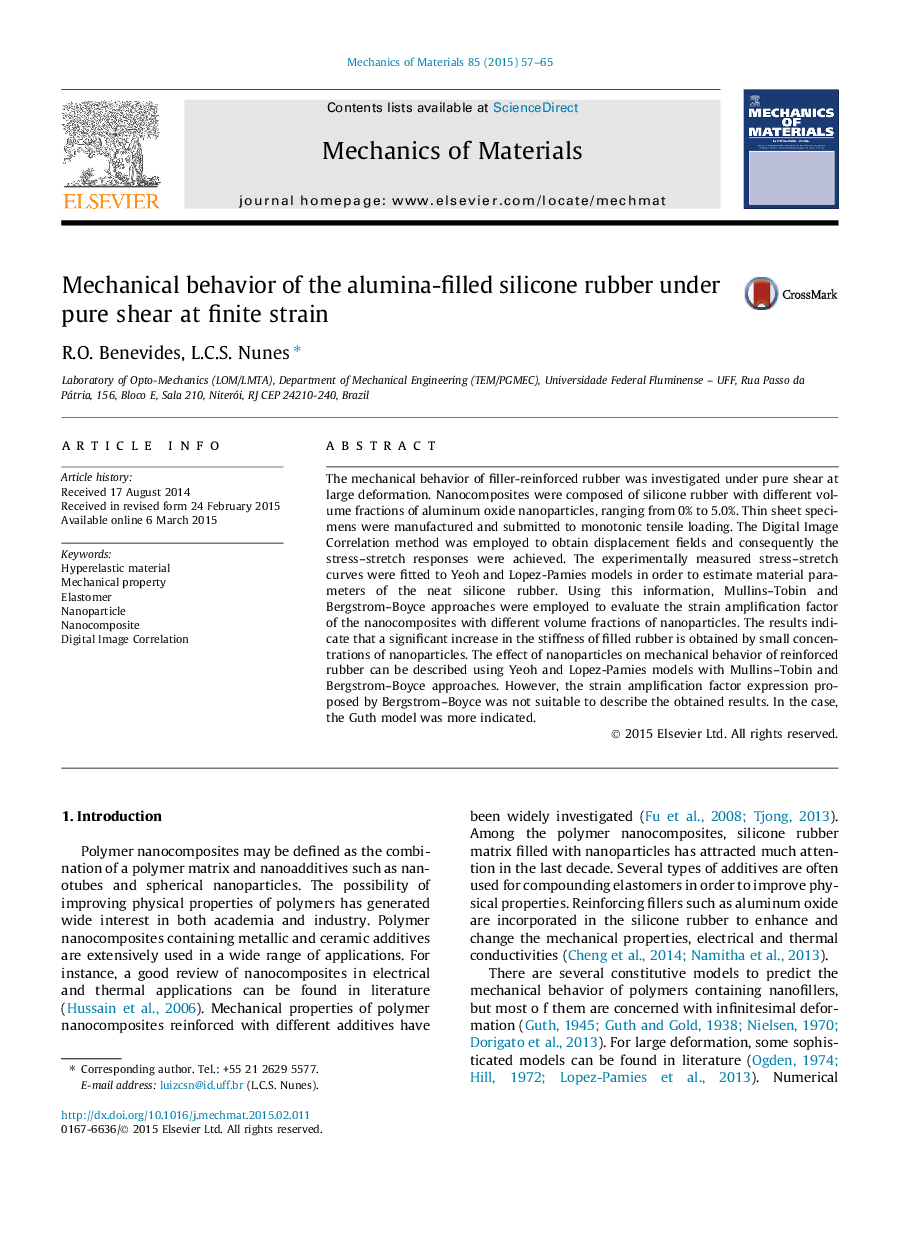| Article ID | Journal | Published Year | Pages | File Type |
|---|---|---|---|---|
| 797565 | Mechanics of Materials | 2015 | 9 Pages |
•Filler-reinforced rubber was investigated under pure shear.•Amplified stretch was evaluated for different concentrations of nanoparticles.•Mullins–Tobin and Bergstrom–Boyce approaches were employed.•Increases of stiffness with a small amount of nanoparticle.
The mechanical behavior of filler-reinforced rubber was investigated under pure shear at large deformation. Nanocomposites were composed of silicone rubber with different volume fractions of aluminum oxide nanoparticles, ranging from 0% to 5.0%. Thin sheet specimens were manufactured and submitted to monotonic tensile loading. The Digital Image Correlation method was employed to obtain displacement fields and consequently the stress–stretch responses were achieved. The experimentally measured stress–stretch curves were fitted to Yeoh and Lopez-Pamies models in order to estimate material parameters of the neat silicone rubber. Using this information, Mullins–Tobin and Bergstrom–Boyce approaches were employed to evaluate the strain amplification factor of the nanocomposites with different volume fractions of nanoparticles. The results indicate that a significant increase in the stiffness of filled rubber is obtained by small concentrations of nanoparticles. The effect of nanoparticles on mechanical behavior of reinforced rubber can be described using Yeoh and Lopez-Pamies models with Mullins–Tobin and Bergstrom–Boyce approaches. However, the strain amplification factor expression proposed by Bergstrom–Boyce was not suitable to describe the obtained results. In the case, the Guth model was more indicated.
